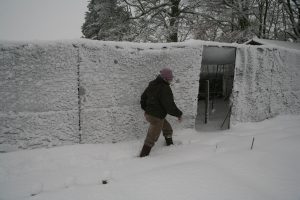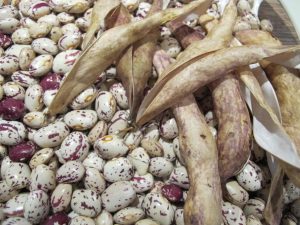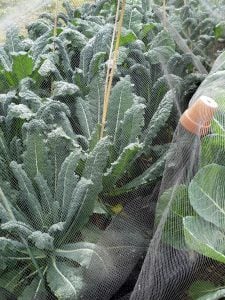
I’m summer weary and tired of picking tomatoes, making jam in the evenings, watering and weeding! I’m waiting for the first frost, although last year we only had a couple and they came well after Christmas for it was the mildest winter ever in the cold, cold Cotswolds, in the wonderfully named village of Cold Aston.
This year I have been discussing the weather with the Best Beloved. And I’ve told him it’s going to be much colder this winter. The swallows and martins, those aerial acrobats of summer days, packed their cases a full four weeks earlier than usual. Normally they’re here until the third week of September – dive bombing the garden in search of insects and lining up on the telephone wires whilst they chunter as if taking a vote on when to go.
However the Best Beloved is sceptical about my theories for next year’s weather. He says the swallows went early due a dearth of insects caused by the exceptionally dry spell we had in August. It’s nothing to do with next season, he explains, with all the patience of an adult addressing a tempestuous toddler. I decide not to stamp on this occasion.
I counterattack instead and mention the glut of honeysuckle berries straddling one wall. When we go to examine this winter treasure trove, which the Best Beloved says is due to this year’s weather and nothing to do with next winter, the berries have gone into the beaks of birds. So I mention the flocks of tits and finches visiting the bird table, already, as further evidence but get an equally dusty reply. Time will tell who’s right.
You see I want snow and I want frost, because then I can eat nuttily flavoured roast parsnips for Sunday lunch. Parsnips, which are a bit thin on the ground on the veg plot, need cold temperatures to convert the sticky starches into sugars. Last year we had to resort to putting parsnips in the fridge for two weeks to turn the slithery roots into delicious food.
I long to light the AGA, an iron horse that gobbles up oil. The Best Beloved once calculated that all the food miles we save by growing our own are balanced out by the oil-guzzling monster in our kitchen. I think I did stamp my foot on that occasion and, if it’s a choice between the Aga and him ladies, he’s on to a loser.
You see I don’t rage against the shortening days, I actually enjoy them. The act of lighting the log burner in time for a four o’clock cup of tea spins me back to my childhood in the 1950s. Whizzing home from school and putting the radio on and sitting in front of the open fire as night descended, was the best part of the day. Sometimes a crumpet was thrown in too. It’s almost primeval cave man stuff, to love fire, but it’s in us all and perhaps gardeners are nearer to the cave than most.
Living in the middle of nowhere, we notice the weather because little happens here. Our village is prone to heavy snow too. However I refuse to have a Chelsea tractor, with four-wheel drive, because there are too many in the village already. Those high off-road vehicles, designed for rough terrain, nearly always force you off the road instead – should you be foolish enough to venture on to the skating rink that passes for our lane in winter. Chelsea tractors are status symbols that have to gleam and shine, so when it snows thick and fast, we batten down the hatches rather than do a Torvill and Dean.

That’s when the Borlotti beans come in handy, because these brown and cream beans are stored in jars. You don’t have to venture out or dig anything up in horrid weather.
You soak them for a day and then cook them slowly and use them with stews, or in our case homemade tomato passata and good sausages sprinkled with rosemary. A useful winter herb, but don’t have too much or you’ll spend the night in far flung corners of your mind. No wonder Shakespeare said ‘rosemary for remembrance’ it’s more stimulating than Turkish coffee.
We grow ‘Lamon’ on the allotment, the tastiest Borlotti of all, and it’s available from Seeds of Italy – www.seedsofitaly.com . ‘Lamon’, named after a cold region of Italy a long way north west of Venice, can also be eaten fresh from the pod when young, which is not usually the case with Borlottis. It has a chestnut flavour and is simply the tastiest of all.
Most of our winter vegetables are in the garden and it’s definitely the way to go, because it’s like having an outside pantry that you can dip into week by week. It stands there from September onwards and most of it can be harvested over months. There is no ‘glut pressure’ when you stagger in with ten courgettes and subject yourself to courgette overload as you experiment with recipe after recipe in a attempt not to waste them. You can’t give them away!

Kale, on the other hand, can be picked in stages and is a brilliant green and brilliant-green vegetable. It can be harvested in autumn, before most winter brassicas are ready, and will go on to fill the ‘hungry gap’ of late spring too. One variety is even called ‘Hungry Gap’. Try Chiltern seeds www.chilternseeds.co.uk . We always grow black Tuscan kale too, ‘Cavolo Nero’. It’s the handsome Prince of Greens, as tempting as Poldark without his shirt. It ripples with good health. Pick it now, but never scalp it at this time of year or hard weather may see it off.
Leeks are another winter staple, and almost as handsome as kale and terrifically hardy. In January 1982 the temperatures in rural Northamptonshire (where I lived then) fell sharply to minus 18C, although RAF Benson in Oxfordshire fell to minus 26. My outhouse windows were like something out of Doctor Zhivago, swirls and twirls of ice, and my vegetable plot turned to mush once the thaw came – all except my leeks that is. They were battered and brown, but still edible.
I’m not wishing for anything quite like as savage as the winter of 1981- 1982 when our village had to have a food drop. I don’t want to put up stranded motorists, or stretch a treacle pudding for 6 into 10, or rescue a dog from a snowdrift, or walk four miles from steeple, to steeple in order to teach – all snowstorm events of my past. I want crisp and even, enough crisp and even to say I told you so!



